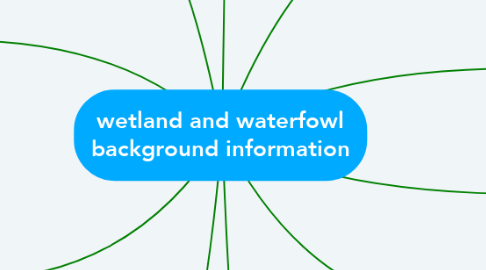wetland and waterfowl background information
by Ryan Wachner


1. why are wetlands important
1.1. because they occur when the dry land meets the water
1.2. wetlands produce more wildlife and plants
2. introduction
2.1. wetlands are the habitat of the waterfowl
2.2. wetlands and waterfowl are important to Michigan heritage
2.3. The number of wetlands are reducing in michigan
3. what are the threats to the wetlands
3.1. the last century seen a greatly increased rate of wetland loss due to filling and drainage by humans
3.2. creation maintenance and transformation of wetland habitat was once controlled by natural processes
4. life cycles of three common waterfowl.
4.1. wood ducks arrived in Michigan from southern wintering areas typically in march
4.2. breeding pairs of blue winged teal prefer seasonally or temporarily flooded shallow wetlands.
4.3. the breeding of mallards is the most extensive of any suck species in north america
5. History
5.1. twelve thousand years ago the ice age made an end in michigan
5.2. water was everywhere
6. major wetland types
6.1. marshes
6.1.1. the water can go from an inch to several feet deep
6.2. swamps
6.2.1. swamps are best described flooded shrub lands or woodlands
6.3. bogs
6.3.1. bogs occur where accumulations of decaying vegetation form mats that eventually will cover and fill in old ponds or kettle lakes.

